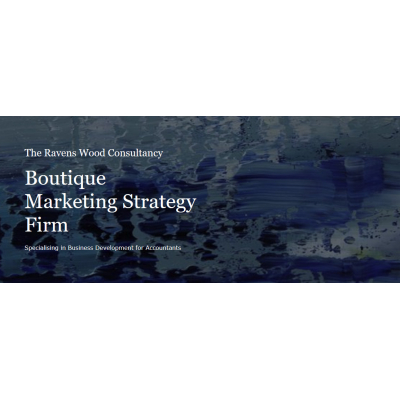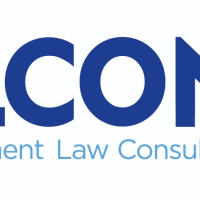07.06.2017
Leaders Lead, Sheep...
The Ravens Wood Consultancy
Business Consultant
What do leaders in professional service firms do? What makes a good CEO/leader? How do they manage alignment? How do you measure the CEO’s success? How does a leader of a professional service firm survive the intense daily demands?
Leadership is critical to a firm’s success precisely because of the inherent characteristics of the professional service firm business model. Without strong leadership, the necessary diffusion of power throughout a firm can paralyze decision-making and undermine alignment. If leadership is too forceful, however, partners will reject its imposition on their autonomy.
Chief executives lead professional service firms - and other talent-driven companies - like boxers with one hand tied behind their backs. Although they are held – and hold themselves – personally accountable for the firm’s success, they lack the authority vested in a typical corporate chieftain. Sometimes their titles reflect these constraints: They are ‘managing partners,’ ‘senior partners,’ or ‘managing directors.’ Regardless of their titles, rarely in business does effective leadership demand such skill and finesse while yielding such enduring benefits to an organization.”
What CEOs Do
Chief executives take responsibility for their firm’s future performance and for the wellbeing of everyone connected to it: owners, employees, and clients. The CEO is a champion for the firm. He refines strategic goals, facilitates strategic decisions, and ultimately implements a wide array of operational imperatives that support new initiatives. This responsibility translates directly to how and when resources, in the form of both people and cash, are allocated.
Successful leaders obsess over understanding the reality of their business circumstances. While they rarely mandate decisions, they have their own sense of direction and argue for it. By prompting debate, they are able to better understand reality and influence the behaviour of their stars.
Outstanding CEOs are outstanding star makers, not necessarily rainmakers. They attract, develop and motivate a diverse group of highly competent professionals. The chief executive’s span of influence is his vehicle for nurturing loyalty – to the firm, to its strategic goals, its values, and its leadership. This loyalty reinforces his ability to orchestrate key decisions such as leadership assignments, promotions and budgets.
Enduring, successful CEOs (and their firms) understand the risk of underestimating the need for future leaders. These CEOs continually analyze their leadership supply and demand, planning at least five years in advance. They identify and recruit future leaders both into the firm and from the ranks of successful practicing professionals. They know the qualities they seek and use the firm’s performance management systems to help identify candidates. They rely heavily on the judgment of their best lieutenants to choose the next generation. The process is not left to chance. It is as explicit and deliberate as the budgeting process.
The Fundamentals of Leadership
Three words best describe outstanding CEOs: character, judgment, and intuition. All three attributes are more or less established by the time a person reaches adulthood. Together, they constitute a basic profile that determines someone’s leadership capability.
Character
Trust is the bedrock of influence. People who trust one another communicate honestly and fully because they are confident in each other’s motives and intentions. Colleagues believe in their integrity, knowing that they are focused on the best interests of the firm and that they will “do the right thing.” CEOs with strong character can walk the talk because the firm’s values and their personal values are reinforcing. They are confidently humble, have bandwidth, and take personal accountability for events and actions that are outside their direct control – and accept the consequences. They give credit instead of taking it and they have the empathy and understanding that build bridges of loyalty throughout an organization.
Judgment
Sound judgment is the ability to make thoughtful decisions across the thousands upon thousands of issues that confront a general manager. Most decisions are incremental and tactical. As a result, the quality of a CEO’s judgment is largely hidden from view – until the consequences begin to play themselves out. The cumulative effect of poor judgment can erode a firm’s intangible assets and undermine its potential.
Intuition
The intuition integral to leadership relates to understanding complex organizational systems. The best professional service firm chief executives have an uncanny ability to understand all the moving parts of their business, and how these parts directly and indirectly influence one another. Like a master chess player, they can anticipate cause and effect many moves ahead.
Managing Alignment
Managing alignment is usually a process of continual fine-tuning rather than a series of periodic blunt thrusts. The chief executive is always pushing here and pulling there, modifying this policy or changing that person’s responsibilities.
The CEO is at the centre of the strategic and organizational decisions that move a firm into (or out of) alignment. It is the CEO’s job to develop a broad perspective across all the firm’s practices and offices, a personal knowledge of many of its professionals and all of its stars, and a sense of the firm’s future needs and the choices that will be required to address them.
Measuring Success
The only effective way to judge the CEO’s success is to evaluate the state of the firm and, in particular, the degree to which it is an aligned and profitable business, well positioned to win in tomorrow’s marketplace. One aspect of measuring success is looking into the past. How was the firm’s financial performance? How popular was this CEO among her partners? However, one must do more than look back to measure success.
When judging leadership, you must also look as far ahead as possible, examining the leading indicators that more appropriately define the future value of a firm. There are two sets of leading indicators that allow you to anticipate future performance. The first is the strategic set. One must look at the progress a firm has made against its strategic goals. The firm must avoid exclusively focusing inward and look outside itself, asking tough questions about its true competitive performance. The second set of leading indicators tracks the intangible assets that drive a firm’s business model such as its stars, clients, external strategic strategy and organizational assets.
Leadership is critical to a firm’s success precisely because of the inherent characteristics of the professional service firm business model. Without strong leadership, the necessary diffusion of power throughout a firm can paralyze decision-making and undermine alignment. If leadership is too forceful, however, partners will reject its imposition on their autonomy.
Chief executives lead professional service firms - and other talent-driven companies - like boxers with one hand tied behind their backs. Although they are held – and hold themselves – personally accountable for the firm’s success, they lack the authority vested in a typical corporate chieftain. Sometimes their titles reflect these constraints: They are ‘managing partners,’ ‘senior partners,’ or ‘managing directors.’ Regardless of their titles, rarely in business does effective leadership demand such skill and finesse while yielding such enduring benefits to an organization.”
What CEOs Do
Chief executives take responsibility for their firm’s future performance and for the wellbeing of everyone connected to it: owners, employees, and clients. The CEO is a champion for the firm. He refines strategic goals, facilitates strategic decisions, and ultimately implements a wide array of operational imperatives that support new initiatives. This responsibility translates directly to how and when resources, in the form of both people and cash, are allocated.
Successful leaders obsess over understanding the reality of their business circumstances. While they rarely mandate decisions, they have their own sense of direction and argue for it. By prompting debate, they are able to better understand reality and influence the behaviour of their stars.
Outstanding CEOs are outstanding star makers, not necessarily rainmakers. They attract, develop and motivate a diverse group of highly competent professionals. The chief executive’s span of influence is his vehicle for nurturing loyalty – to the firm, to its strategic goals, its values, and its leadership. This loyalty reinforces his ability to orchestrate key decisions such as leadership assignments, promotions and budgets.
Enduring, successful CEOs (and their firms) understand the risk of underestimating the need for future leaders. These CEOs continually analyze their leadership supply and demand, planning at least five years in advance. They identify and recruit future leaders both into the firm and from the ranks of successful practicing professionals. They know the qualities they seek and use the firm’s performance management systems to help identify candidates. They rely heavily on the judgment of their best lieutenants to choose the next generation. The process is not left to chance. It is as explicit and deliberate as the budgeting process.
The Fundamentals of Leadership
Three words best describe outstanding CEOs: character, judgment, and intuition. All three attributes are more or less established by the time a person reaches adulthood. Together, they constitute a basic profile that determines someone’s leadership capability.
Character
Trust is the bedrock of influence. People who trust one another communicate honestly and fully because they are confident in each other’s motives and intentions. Colleagues believe in their integrity, knowing that they are focused on the best interests of the firm and that they will “do the right thing.” CEOs with strong character can walk the talk because the firm’s values and their personal values are reinforcing. They are confidently humble, have bandwidth, and take personal accountability for events and actions that are outside their direct control – and accept the consequences. They give credit instead of taking it and they have the empathy and understanding that build bridges of loyalty throughout an organization.
Judgment
Sound judgment is the ability to make thoughtful decisions across the thousands upon thousands of issues that confront a general manager. Most decisions are incremental and tactical. As a result, the quality of a CEO’s judgment is largely hidden from view – until the consequences begin to play themselves out. The cumulative effect of poor judgment can erode a firm’s intangible assets and undermine its potential.
Intuition
The intuition integral to leadership relates to understanding complex organizational systems. The best professional service firm chief executives have an uncanny ability to understand all the moving parts of their business, and how these parts directly and indirectly influence one another. Like a master chess player, they can anticipate cause and effect many moves ahead.
Managing Alignment
Managing alignment is usually a process of continual fine-tuning rather than a series of periodic blunt thrusts. The chief executive is always pushing here and pulling there, modifying this policy or changing that person’s responsibilities.
The CEO is at the centre of the strategic and organizational decisions that move a firm into (or out of) alignment. It is the CEO’s job to develop a broad perspective across all the firm’s practices and offices, a personal knowledge of many of its professionals and all of its stars, and a sense of the firm’s future needs and the choices that will be required to address them.
Measuring Success
The only effective way to judge the CEO’s success is to evaluate the state of the firm and, in particular, the degree to which it is an aligned and profitable business, well positioned to win in tomorrow’s marketplace. One aspect of measuring success is looking into the past. How was the firm’s financial performance? How popular was this CEO among her partners? However, one must do more than look back to measure success.
When judging leadership, you must also look as far ahead as possible, examining the leading indicators that more appropriately define the future value of a firm. There are two sets of leading indicators that allow you to anticipate future performance. The first is the strategic set. One must look at the progress a firm has made against its strategic goals. The firm must avoid exclusively focusing inward and look outside itself, asking tough questions about its true competitive performance. The second set of leading indicators tracks the intangible assets that drive a firm’s business model such as its stars, clients, external strategic strategy and organizational assets.
The Ravens Wood Consultancy
Business Consultant
The Ravens Wood Consultancy was founded by Jayesh P. Patel in 1996 working with professional intermediaries throughout the UK. I specialise in developing Marketing Strategy and Business Development…
Property
Why Do We Need Emergency Lighting?
Emergency lighting plays a critical role in ensuring life safety first in any…
Employment & HR
Labour’s new Employment Rights Bill: challenges employers...
The introduction of Labour’s Employment Rights Bill on 10th October 2024 has created a significant shift in how…
More Articles
Business Management
The Value of a Sustainability Strategy in the Tender Process
In today’s competitive landscape, businesses face increasing pressure to demonstrate their commitment to…
Business Management
Unlocking the Power of Raw Financial Data
At Master of Coin Consulting, we offer independent strategic finance advice to help micro to medium-sized businesses…
Would you like to promote an article ?
Post articles and opinions on Professionals UK
to attract new clients and referrals. Feature in newsletters.
Join for free today and upload your articles for new contacts to read and enquire further.







